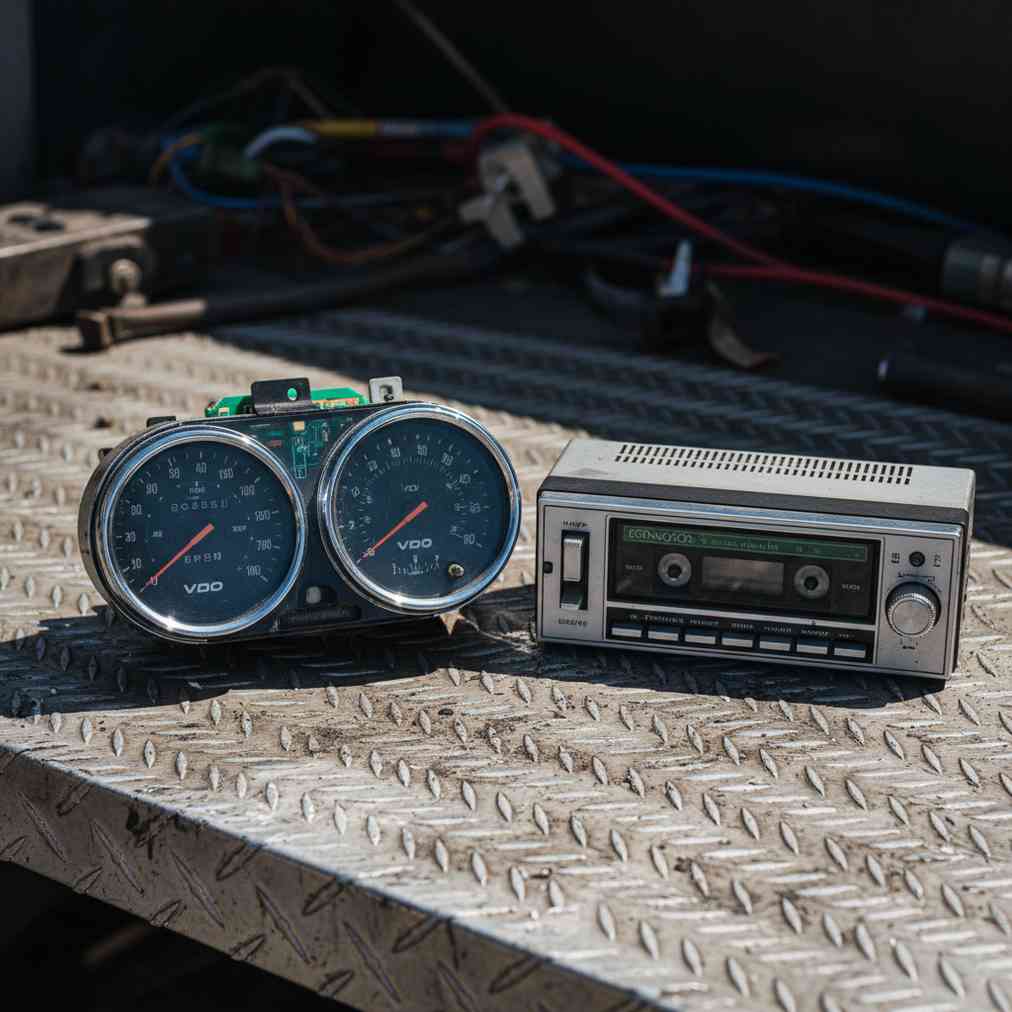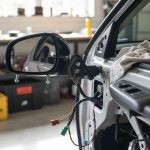The Hidden Economy of Automotive Gold Mining
In the sprawling landscapes of salvage yards across America, a specialized breed of entrepreneurs has emerged, turning rust and metal into substantial profits. These professional resellers, often called “pickers” or “flippers,” have transformed the humble junkyard visit into a sophisticated business operation that can generate thousands of dollars monthly.
The automotive recycling ecosystem has evolved far beyond casual DIY mechanics searching for cheap replacement parts. Today’s professional flippers operate with the precision of data scientists, combining market research, networking skills, and mechanical expertise to extract maximum value from discarded vehicles.
High-Value Targets: What Professional Flippers Hunt
Success in the junkyard flipping business depends entirely on knowing which parts command premium prices while remaining easy to extract and ship. Professional resellers focus their efforts on specific categories that offer the best return on investment.
Electronics and Interior Gold Mines
The most coveted items in any salvage yard are the electronic and interior parts that combine small size with high resale value. Gauge clusters and OEM radios top this list, particularly those from higher trim levels or rare models. These parts are relatively simple to remove, easy to ship, and consistently command strong prices in online marketplaces.
- Digital gauge clusters from luxury vehicles or sports cars
- OEM navigation systems and premium audio equipment
- Window switches and AC control units with consistent demand
- Steering wheel controls and multifunction switches
The appeal of these electronic parts lies in their universal application and the difficulty consumers face in finding affordable replacements through traditional channels. A gauge cluster that costs $800 new can often be acquired for $20-40 at a u-pull yard and resold for $200-400.
Performance and Specialty Parts
The enthusiast market drives tremendous demand for specific performance parts, with LS engines from General Motors leading the charge. The LS engine family’s popularity in swap projects has created a thriving secondary market for complete engines as well as individual parts like oil pans, intake manifolds, and accessories.
| Part Category | Typical Yard Price | Resale Value | Profit Margin |
|---|---|---|---|
| LS Engine Complete | $400-800 | $1,200-2,500 | 200-300% |
| German Car Electronics | $15-50 | $100-300 | 500-600% |
| Brembo Calipers | $25-75 | $150-400 | 400-500% |
| OEM Wheels (Rare) | $40-100 | $200-600 | 300-500% |
German car parts represent another lucrative niche, as BMW and Mercedes-Benz owners face notoriously expensive replacement costs for OEM parts. Even complex-to-remove items justify the extraction time when resale values can reach several hundred dollars.
Classic and enthusiast vehicle parts complete this category, with older Civics, Integras, and muscle cars yielding high-value OEM parts no longer in production. Modern data analysis techniques help resellers identify which classic models are trending in collector markets.
The Speed Game: First-Come, First-Served Strategy
In the world of professional junkyard flipping, timing isn’t just important—it’s everything. The most valuable parts disappear within hours of a vehicle entering the yard, creating a high-stakes environment where success depends on speed and access.
The Critical First Hours
At popular pick-n-pull style yards, desirable vehicles become stripped skeletons with remarkable speed. Professional flippers understand that highly sought-after cars lose their valuable parts within the first few hours of availability to customers. This reality drives the entire business model around gaining early access.
“The difference between profit and loss often comes down to being first through the gate when a good car hits the yard. By the time casual customers arrive, the gold is already gone.”
Professional Parts Flipper
Networking and Relationship Building
Successful resellers invest heavily in relationships with yard employees, recognizing that information equals profit. These connections provide invaluable advantages that casual visitors simply cannot access.
- Advance notifications via text messages when valuable vehicles arrive
- Special pricing arrangements (40% discounts are not uncommon for repeat customers)
- Early access opportunities before vehicles become available to the general public
- Insider knowledge about upcoming inventory additions
Building these relationships requires consistency, professionalism, and often significant initial investment in parts purchases to demonstrate serious business intent.
Specialized Knowledge as Competitive Advantage
Professional flippers develop deep expertise in specific makes, models, or chassis families. This specialization dramatically reduces extraction time and increases the volume of valuable parts they can remove during each yard visit. While a casual visitor might spend an hour figuring out how to remove a dashboard, an experienced flipper completes the same task in minutes.
This expertise extends to understanding parts interchange ability, allowing flippers to recognize when a part from one vehicle fits multiple applications, multiplying its market value.
Business Operations and Profit Maximization
Running a successful parts flipping operation requires more than just mechanical knowledge and yard access. Professional resellers operate sophisticated businesses with research protocols, inventory management, and marketing strategies.
Research-Driven Purchasing Decisions
Before investing in any part, successful flippers conduct thorough market research. This involves checking sold listings on eBay, Facebook Marketplace, and other platforms to establish realistic resale values and ensure healthy profit margins.
Many professionals maintain minimum resale value thresholds—commonly $90 or higher—to ensure their time investment yields appropriate returns. Advanced data collection methods help track market trends and price fluctuations across different platforms.
Logistics and Scale Operations
The profit realization process extends far beyond the initial parts extraction. Professional flippers must excel at:
- Cleaning and preparation to maximize visual appeal
- Professional photography that highlights condition and features
- Multi-platform listing strategies to reach diverse buyer segments
- Efficient packaging and shipping to minimize costs and damage
- Customer service to maintain high seller ratings
Some parts sell immediately—occasionally while the flipper is still at the yard—while others may require months of patient marketing to find the right buyer.
Scale and Profitability Levels
The business model scales dramatically based on time investment and expertise. Part-time operators might generate several thousand dollars monthly in additional income, while full-time professionals can achieve significant gross sales volumes.
Success factors include inventory turnover rates, average profit margins per part, and the ability to identify and access high-value vehicles before competitors. Emerging data science trends are beginning to influence how professional flippers analyze market opportunities and optimize their operations.
Market Dynamics and Industry Impact
The professional parts flipping industry operates within broader automotive recycling and aftermarket parts ecosystems, influenced by factors ranging from new vehicle pricing to environmental regulations.
Economic Drivers
Rising new vehicle prices and increased complexity of modern automotive systems create sustained demand for quality used OEM parts. Consumers facing $800 repair quotes for new parts naturally seek alternatives, creating the market conditions that make professional flipping profitable.
Additionally, the growing DIY automotive repair community, fueled by online tutorials and forums, expands the customer base for specialized parts that might have previously only been purchased by professional mechanics.
Technology Integration
Modern salvage yards increasingly utilize inventory management systems and online platforms that can both help and challenge professional flippers. While digital inventory systems provide better access to vehicle information, they also level the playing field for casual buyers.
Successful professionals adapt by leveraging technology themselves, using mobile apps for price checking, parts compatibility verification, and inventory tracking. Data integration techniques help experienced flippers combine information from multiple sources to identify opportunities others miss.
Challenges and Risks
Despite the profit potential, professional parts flipping involves significant challenges and risks that must be carefully managed.
Market Competition and Saturation
As awareness of flipping opportunities grows, competition intensifies. Popular yards may have multiple professional flippers competing for the same high-value vehicles, reducing profit margins and requiring increasingly sophisticated strategies.
Market saturation in certain part categories can also impact profitability, particularly for common parts that multiple flippers target simultaneously.
Financial and Operational Risks
- Inventory carrying costs for parts that don’t sell quickly
- Storage space requirements for larger parts
- Shipping damage and customer return issues
- Platform fees and payment processing costs
- Market price volatility affecting profit margins
Professional flippers must also navigate varying yard policies, seasonal demand fluctuations, and the physical demands of parts extraction.
Getting Started in Parts Flipping
For those interested in exploring this opportunity, success requires careful planning and gradual skill development.
Essential Skills and Knowledge
Beginning flippers should focus on developing expertise in specific vehicle categories rather than attempting to cover all makes and models. This might involve specializing in Japanese imports, German luxury vehicles, or American muscle cars.
Critical skills include parts identification, removal techniques, condition assessment, and market research capabilities. Advanced research methodologies can help newcomers identify profitable niches and market trends.
Building Relationships and Networks
Success in professional parts flipping ultimately depends on relationships—with yard employees, fellow flippers, and customers. Building these networks takes time but provides the foundation for long-term profitability.
New flippers should start by becoming regular, professional customers at local yards, demonstrating reliability and business-focused purchasing patterns.
The Future of Junkyard Gold Rush
The professional parts flipping industry continues evolving as automotive technology advances and market conditions change. Electric vehicle adoption will create new opportunities and challenges, while big data analytics increasingly influence how professionals identify and capitalize on opportunities.
For vehicle owners looking to sell their junk cars for cash, understanding this ecosystem provides insight into how their vehicles contribute value even at the end of their functional lives.
The junkyard gold rush represents a fascinating intersection of traditional mechanical knowledge, modern data analysis, and entrepreneurial opportunity. As automotive complexity increases and sustainability concerns grow, the role of professional parts flippers in the automotive ecosystem will likely become even more significant.
Whether viewed as a side hustle or full-time business opportunity, parts flipping demonstrates how modern entrepreneurs find profit in unexpected places, turning abandoned vehicles into valuable resources through knowledge, skill, and strategic thinking.





Leave a Reply
You must be logged in to post a comment.